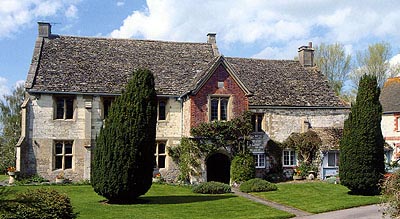 |
 |
|||
|
|
Ashbury Manor is arguably one of the finest and most original manor houses in the country. Dating from 1488, with later additions and constructed of cut stone, chalk and brick under a stone slate roof, the house has been sympathetically maintained without significant alteration. Set back from the rest of the village, the Manor has ample reception and bedroom accommodation, together with an attached cottage. Set to the east of the house are the barns and outbuildings arranged around a large courtyard with an impressive timber framed barn with tiled roof. Ownership of Ashbury Manor can be traced back as far as AD 840, although the grant of 'Aysshebury' to Saint Dunstan, Abbot of Glastonbury in AD 947 is perhaps the more important. Ashbury remained in the ownership of Glastonbury Abbey until the Dissolution in 1539. The substantial majority of the current house is credited to Abbot John Selwood in 1488 and that it was intended to serve as an occasional residence for the Abbot and as a hostelry for young monks journeying from Glastonbury to study at Oxford. The Blessed Richard Whiting, the last abbot, who was hanged during the Dissolution, is known to have particularly favoured Ashbury, along with Sturminster Newton Manor in Dorset. The kitchen and cottage wings are later additions dating from the mid 1800s. The nature of the occupation of the property is largely responsible for its present highly original form. Having been superseded by Ashdown Park, from about 1620 until 1956, the property was occupied by tenants. It is common in these circumstances for only the minimum expense to be made on essential repair and maintenance, by both landlord and tenant and this has ensured its survival. Within the principal structure much of the internal partitioning dates from the 15th century, with some wonderful panelling, timberwork and ceiling roses. On the first floor, the master bedroom, believed to be the Abbot's Chamber, has an impressive continuous frieze of traceried panels. A 15th century screen separates the chamber from the dressing room above the porch which may well have been an oratory or chapel. Hence the building's alternative name of Chapel Manor. Following acquisition by the vendors family in 1956 (having occupied since 1927 as tenants) from the Craven estate, a systematic investigation and restoration was undertaken with some sympathetic alteration. A detailed article on Ashbury Manor appeared in Country Life Magazine spread over two issues in October 1966 to which this note is attributed. Ashbury Manor is a private residence. It was last offered for sale by Humberts in 2004.
|
|||
| © Nash Ford Publishing 2004. All Rights Reserved. The location of this country house is now administered by Oxfordshire County Council. | ||||



 Ashbury
Manor
Ashbury
Manor